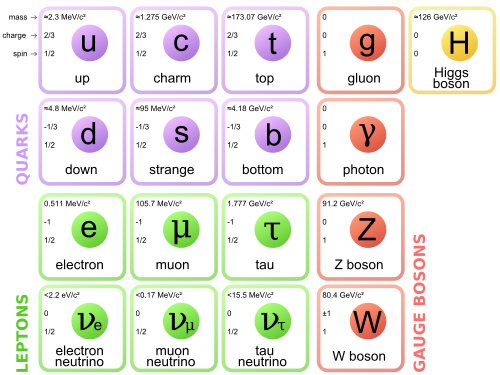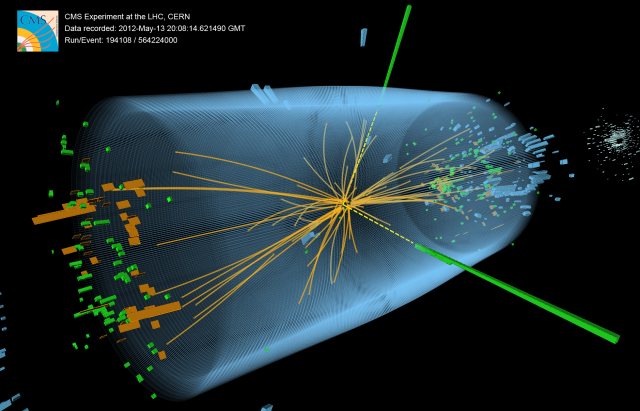Gauge Theory
The words “gauge theory” refer to our most successful framework for the description of nature, i.e. of matter and its interactions.
We know about four different interactions today, out of which at least two are talked about even in everyday life: the gravitational and the electromagnetic interaction. In addition, there exists two less known ways through which matter can interact. Physicists refer to these as weak and strong interaction.
Nature´s interactions hold particles together and organize them into complex objects.
Since the discovery of quantum mechanics, we think about all interactions as being mediated through the exchange of messenger particles. They carry bundles of energy, which are emitted and absorbed by their senders or receivers. For the gravitational interaction the messengers are known as gravitons while the electromagnetic interaction is mediated by photons, the particles of light.
In the case of weak and strong interactions, the messengers have been named W, Z- bosons and gluons, respectively. These are less known but absolutely fundamental for the properties of matter. They can be seen in particle colliders such as the Large Hadron Collider (LHC) at CERN. Gluons were actually first observed at the collider Petra at DESY, Hamburg, in 1979.
Standard model of elementary particles: the 12 fundamental fermions and 4 fundamental bosons. Courtesy of Fermilab, Office of Science, United States Department of Energy, Particle Data Group.
Precious predictions for large colliders
With the exception of the graviton all such messenger particles can be described in a unified mathematical framework that was originally proposed by C.N. Yang and R. Mills in 1954. It took a while for physicist before they learned how to use Yang-Mills gauge theories in making meaningful predictions. Quite of a few of the pioneering scientists that took part in this endeavour have later received the Nobel prize for their contributions. Today, all numerical predictions for high-energy collisions, such as the ones seen at the LHC at CERN, are based on computations with gauge theories and their accuracy is amazing.
Inspecting Numbers
The image of one such collision is shown below. Given the overwhelming complexity of the experimental data it may not be too surprising that also the gauge theory computations that describe such experimental outcome are of breath-taking difficulty. In fact, many different communities involving thousands of theoretical physicists have devoted their entire research to this task. They are supported by some of the world’s most powerful computers. In the process of such computations one often has to compute thousands of terms only to discover that when they are all summed up they give zero. This is clearly a very frustrating experience. We can at least try to give you an idea of how it feels. Suppose somebody asks you to compute 1-3+4-5+3-1+5. Of course you can figure out that the answer is 4. Now note that 4 is among the numbers you have added. If you inspect the other numbers more carefully, you will see that they are all odd and that they all come once with positive and once with negative sign. If you had spent several days to compute 5 only to discover a few days later that there is a -5, you would certainly feel like you had wasted your time. So, if somebody had convinced you that all odd numbers come in pairs with opposite signs and also given you a simple criterion how to predict whether the result of a computation will be even or odd, this would change your life. The situation in gauge theory is similar, only that computations are just incredibly much more difficult and we are still missing the simple rules that could make them really as simple as the final outcome.
Event recorded with the CMS detector in 2012 at a proton-proton centre of mass energy of 8 TeV. The event shows characteristics expected from the decay of the SM Higgs boson to a pair of photons (dashed yellow lines and green towers). The event could also be due to known standard model background processes. Courtesy of CERN.
Conclusion: A Millennium Price Problem
Gauge theories, while being the most successful theories of physics, are very far from being understood. In fact, one of the famous Millennium Price Problems of the Clay Mathematical Institute is devoted to the issues we have with gauge theories, recognizing both the fundamental role of gauge theories and the tremendous challenges they impose on us to this very day.


